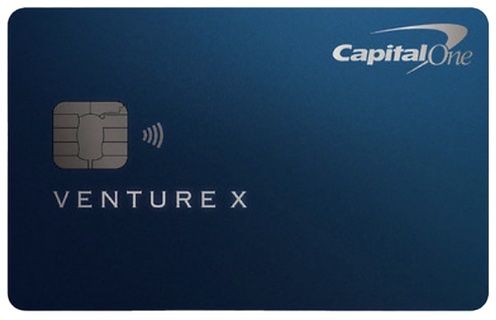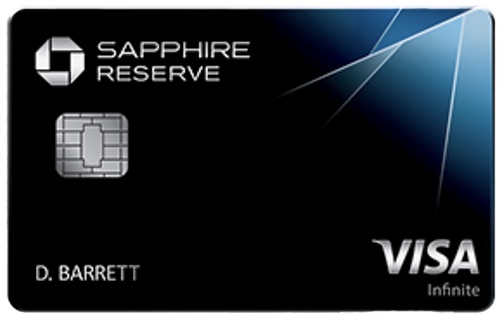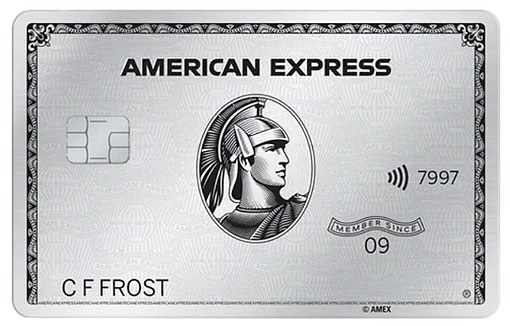by Daniel | Last Updated April 11th, 2022

We may earn a commission for purchases using our links, at no cost to you.
With so many high-end credit cards now available it can be a bit of a job to find one that meets all of your needs.
And for this reason, I thought that I would review three of the top-tier credit cards that are available now.
In this article, I am going to review and compare 3 different credit cards, the Capital One Venture X, the Chase Sapphire Reserve, and the Amex Platinum Card.
Basically what I will do is simple, I’ll go over what you can expect to receive each year in terms of benefits and user perks, What the annual fee is, and then I’ll give you my opinion on which card I think is the best value.
So Who Are These Cards Good For?
All of these credit cards have a strong focus on travel-related benefits, which will make them great for anyone that does travel a fair amount.
They are also relatively expensive to maintain on an annual basis, so they will be most suitable for experienced credit card holders that are looking for the most value they can get out of their credit cards.
And if you are considering one of these credit cards, it’s worth thinking about which one will serve your needs the best, as all of these cards have a wide variety of different benefits that can be great if you use them all, but if you don’t use the benefits, they can end up being a bit of an expensive item to have.
APR
Now in this part of the review, I’m going to go over what the APR is for each card and what charges and fees are implemented to your account if you get a cash advance or do a balance transfer.

So starting with the Capital One Venture X credit card there is a variable APR of between 17.24% – 24.24% for purchases.
If you get a cash advance the APR will be 24.24% and you will also incur a fee of either $10 or 3% of the amount of each cash advance, whichever amount is more.
And then if you make a late payment you will be charged a fee of up to $40.

Next up, with the Chase Sapphire Reserve card, the APR for purchases is exactly the same at 17.24% to 24.24%.
For cash advances, the APR is slightly higher at 25.24%, and the fees are either $10 or 5% of the amount of each transaction, whichever one is more.
If you miss the minimum payment or have a payment that is returned unpaid, you will be charged a fee of up to $40 for each penalty.
You will also be put on to a Penalty APR of 29.99%, which can stay on your account indefinitely.

And finally, with the Amex Platinum Card, the APR for purchases is currently between 16.24% to 23.24%, which is the lowest of the 3 cards.
If you choose to get a cash advance the APR will be 25.49% and you will also incur a fee of either $10 or 5% of the amount of each transfer, whichever is greater.
And then just like the Chase Sapphire Reserve card, there is a Penalty APR of 29.99% and a fee of up to $40 for any payments that are returned by your bank or if you make a late payment.
So for this section of the Review, the Amex Platinum Card has the most favorable APR rates for purchases, which start at 1% lower than the other two cards.
Annual Fee
Now seeing that these cards are premium credit cards, they all come with relatively high annual fees, and this can be the deciding factor for some people when closing a new credit card.
But as you will see later in this review, if you take advantage of the benefits that come with each card you should have no trouble covering the cost of the annual fee.

So starting with the cheapest of the three cards, The Capital One Venture X card has an annual fee of $395, which considering all of the benefits that come with the card, is not too bad.

Next up, with the Chase Sapphire Reserve card, there is an annual fee of $550, which is $145 more per year than the Venture X card.

And then finally, the most expensive card is the Amex Platinum Card, which has an annual fee of $695, which is not cheap.
It is $300 more than the Venture X card and $145 more than the Chase Sapphire Reserve card.
So when it comes to choosing one of these cards, the cost of the annual fee will defiantly make a difference in which card makes the most sense for you.
Also, it’s worth considering if the benefits that come with each card will be useful for your situation.
Sign-up Bonus
So for the next section of this review, I will take a look at what the current sign-up bonuses are for each card.

So starting with the Capital One Venture X card you can currently earn 75,000 bonus miles after you spend $4,000 on purchases whiting the first 3 months of opening the account.
And with the Capital One Venture X miles being worth about 1 cent per mile, this sign-up bonus is worth approximately $750.
So it’s enough to easily cover the cost of the annual fee and leave you with another $355 in value.

Next up, with the Chase Sapphire Preferred card, you can currently earn 50,000 bonus points after you spend the same $4,000 on purchases within the first 3 months of card ownership.
And with Chase Sapphire Reverse card points being worth up to 1.5 cents per point, this sign-up bonus is worth approximately $750.
So the sign-up bonus is worth as much as the Venture X card, but the card costs an additional $145 per year, so its doesn’t present as much value for this section.

And now finally, with the Amex Platinum Card, the sign-up bonus seems to vary a bit.
After completing multiple search queries for the Amex Platinum card through different web browsers, I saw a sign-up bonus starting as low as 100,000 points, all the way up to 150,000 points.

Now if you do decide to get this credit card, make sure to spend some time trying to find the higher sign-up bonus, as it is worth quite a bit more.
So assuming you can get the 150,000 bonus points, the sign-up bonus will be worth up to $1,500 if you redeem the points through the highest value options on the Amex website.
And to receive the sign-up bonus, you will need to spend $6,000 within the first 6 months of opening the account.
So it’s defiantly the highest sign-up bonus out of the three cards, even if you take into account the price difference for the annual fee between the Platinum card and the Venture X card, it is still worth substantially more.
Earning Points
Now the next section of this review is a pretty important aspect of these credit cards, which is how easy it is to actually earn points or miles through everyday spending.
And this can make quite a big difference to the amount of value you get from your credit card, especially if you spend a lot of money each year.

So starting first with the Capital One Venture X card there are a few options.
Initially, you will be able to earn 10x miles per dollar spent at hotels and on rental cars that are booked through Capital One Travel.
Then any flights that are booked through Capital One Travel will receive 5x miles.
And finally, all other purchases will receive 2x miles per dollar spent.

Next up, with the Chase Sapphire Reserve card you have some equally impressive options for earning points, and just remember that these points at worth 1.5 cents per point compared to the 1 cent per point or miles for the other two cards.
So initially you will earn 10x points per dollar spent on hotels, car rentals, and dining as long as they are booked through Chase Ultimate Rewards.
And until June 30th, 2022, any Peloton Bike and Tread purchase will receive 10x points up to a total of 50,000 points.
Then from here, you can earn 5x points for flights that are booked through Chase Ultimate Rewards.
Any travel or dining purchases that are not booked through Chase Ultimate Rewards will receive 3x points.
And then all other purchases will receive 1 point per dollar spent.

Now finally, with Amex Platinum Card there aren’t quite as many options for earning points.
So initially you can earn 5x points on flights that are booked either directly with the airline or through American Express Travel, but this is limited each year to a total spend of $500,000.
Then prepaid hotels that are booked through AmexTravel.com will also receive 5x points.
And then all other purchases will receive 1 point per dollar spent.
So when it comes to points or miles earning potential, the Chase Sapphire Reserve card has the advantage, first of all, because each point is worth 1.5 cents per point compared to 1 cent per point of miles with the other two cards.
Also, there is a better variety of options to earn points from.
Benefits and User Perks
Now let’s go over all of the benefits and perks that come with each of these cards.
And this is where quite a lot of the actual value of these cards comes from.
So take note of what benefits sound the best to you, if you know you won’t use certain benefits that a card is offering, the card may not be worth having, as it will just cost you money to have it.

Starting first with the Capital One Venture X card one of the most valuable befits that this card comes with is a $300 annual travel credit.
And to receive this benefit you will need to make your bookings through Capital One Travel, and you will then be given the money back as a statement credit.
So just this one benefit alone brings the annual fee of the card down to $95.
As with all of these cards you will receive a credit of up to $100 that can be used for either TSA PreCheck or Global Entry.
Each card anniversary you will receive 10,000 bonus miles (which are worth $100).
Something that comes in handy when you are traveling is a free Priority Pass Select membership that is worth $429 and gives you unlimited access to over 1,300 airport lounges from all over the world.
Along with this, you will also get unlimited access to the Capital One Lounge with up to 2 free guests each time you visit.
And seeing that it usually costs $65 per person to visit, it’s a pretty nice extra to have.
So the benefits that come with the Venture X card are worth approximately $929 each year.
Next up, with the Chase Sapphire Reserve card, you will get very similar benefits.

So just like the Venture X card, you will also get a $300 annual travel credit that gets reimbursed to your account, but unlike the Venture X card you don’t have to book your travel through Chase, basically all you have to do is make a purchase that qualifies as travel and then you will receive a statement credit a few days later.
You get the same $100 credit for TSA PreCheck or Global Entry, and a free Priority Pass Select Membership worth $429.
The only main difference with the Chase Sapphire Reserve card over the Venture X card is that you get a few benefits that come with the Luxury Hotel & Resort Collection.
Basically, it includes a credit of up to $100 that can be used at the hotel, daily breakfast for two, a room upgrade if available, and then early check-in and late check-out if it is available.
So the Chase Sapphire Reserve card offers about the same value each year of about $929.

Now finally, with the Amex Platinum Card, you actually get quite a lot more benefits than either of the other 2 credit cards.
And just to keep it simple, I’ll just briefly go over every benefit.
- So there is a $300 credit for use at Equinox gyms and a $240 Digital Entertainment credit.
Then you will get a $200 credit for each of the following benefits. - $200 Hotel Credit
- Airline Fee Credit of $200
- $200 Uber Cash
- Then there is a $179 credit for use on a CLEAR membership and a $155 credit for use on Walmart + membership.
- There is a $100 credit for use at Saks Fifth Ave.
- You will then receive the same $100 credit for either TSA PreCheck or Global Entry and a free Priority Pass Select Membership worth $429.
- And an additional benefit that is exclusive to this card is access to multiple airport lounges which include the Centurion Lounge and the Delta SkyClub.
- Through the Cruise Privileges Program, you can earn up to $300 shipboard credit if you book 5 nights or more.
- With the Fine Hotels & Resorts Program and The Hotel Collection, you will get a $100 amenity credit for each as long as your bookings are 2 nights or more.
- And then finally you will get a higher status at Hilton Hotels, Marriot Bonvoy hotels, and also with Hertz, Avis, and National car rental services.
So all up, the Amex Platinum Card offers around $2450 in benefits, if you can take advantage of all of them.
Insurance Related Benefits
Now for this section of this review, I’m going to go over all of the insurance-related coverage that each card comes with.

Starting with the Capital One Venture X card there is Cell Phone Protection that covers up to $800 if your phone is stolen or damaged.
There is an Auto Rental Collision Damage Waiver that covers up to $75,000 in case of theft, physical damage, and reasonable customary towing.
You will receive Trip Delay Reimbursement of up to $500 per ticket if your trip is delayed by more than 6 hours.
And similar to this there is also Trip Cancellation/Interruption insurance that covers up to $2,000 per person.
If your luggage is lost or damaged by a carrier you will be covered by Lost Luggage Reimbursement for up to $3,000 per trip.
There is Return Protection on new purchases for up to 90 days that covers up to $300 if a merchant won’t accept the item back.
And then finally there is Extended Warranty Protection of up to 1 extra year on manufactures warranties that are 3 years or less.

Now with the Chase Sapphire Reserve card, there is a similar Auto Rental Collision Damage Waiver that covers up to $75,000 in case of theft or damage to a rental car.
There is the same Trip Delay Insurance that overs up to $500 for delays of 6 hours or more
Now the Trip Cancellation/Interruption insurance actually covers a fair bit more than the Venture X card.
So it covers up to $10,000 per person and $20,000 per trip.
Lost Luggage Reimbursement is the same, which is coverage of up to $3,000 per person.
For Return Protection you will actually get a higher coverage of up to $500 per item and $1,000 per year.
The Extended warranty is the same.
And then finally, with the Chase Sapphire Reserve card you will get Emergency Evacuation & Transportation coverage which will cover up to $100,000 in the event that you or an immediate family member are injured or become sick whilst on a trip.

Now finally, with the Amex Platinum Card, you will get Cell Phone Protection that is similar to the Venture X card.
Basically, it will cover up to $800 per claim with a maximum of 2 claims in a 12 month period, and each claim comes with a $50 fee.
The Auto Rental Loss and Damage Insurance is very similar to the other cards and covers up to $75,000 for damage or theft of a rental vehicle.
Trip Delay Coverage is the same and covers up to $500 per trip if your trip is delayed for more than 6 hours.
With the Trip Cancellation, the Amex Platinum Card offers similar coverage to the Chase Sapphire Reserve card which is up to $10,000 per person and $20,000 per card per year.
The Baggage Insurance Plan that comes with the Platinum card is similar to both of the other cards ‘Lost Luggage Reimbursement’.
Basically, it covers up to $2,000 per person for check baggage and $3,000 per person for carry-on baggage.
Then the Purchases Protection that comes with the Platinum card covers the same 90 days as the Venture X card but covers $10,000 per item and $50,000 per card per year, which is a lot more than the Venture X card which covers up to $300.
And then finally the Extended Warranty is similar to the other two cards but is for US warranties that are 5 years or less, whereas the other two cards are for warranties that are 3 years or less.
Final Thoughts
So now that I’ve gone over everything that these cards have to offer, which card do I think offers the most value?
Before I do choose the best overall card, I think that all of these credit cards are really good value and can offer you a whole range of different perks that are worth quite a lot of money.
Also, it’s worth taking into account what perks you will actually use with each card, as some of the perks might not be of any use to you, and therefore, not worth it.
If money is not an issue, then the Amex Platinum card is clearly the best card to choose from as it offers more in the way of benefits than either of the other two cards.
If you are able to secure the 150,000 bonus points upon signing up, it will also be the most valuable sign-up bonus amongst these cards.
Both the Chase Sapphire Reserve card and the Capital One Venture X card are very similar cards, as they offer most of the same benefits, and the sign-up bonus is currently worth about the same.
One of the biggest differences between these two cards would be the fact that the Chase Sapphire Reserve card has a lot more potential to earn points as it has a wider variety of options for where you can earn points from.
Also, the Points with the Reserve card are worth quite a bit more at 1.5 cents per point compared to both of the other cards 1 cent per point.
Now if you like these cards but are looking for something a bit more affordable, why not check out my review and comparison of the Delta SkyMiles Platinum Card and the Amex Gold card here.
